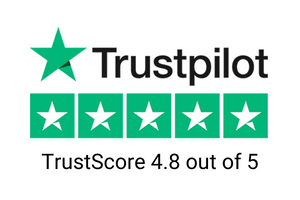Last Updated:
July 19, 2024
Learn how to calculate your debt-to-income ratio

Disclaimer: We are not qualified legal or tax professionals and are not giving advice. Always speak with a qualified professional before making any legal or financial decisions.
Your debt-to-income (DTI) ratio is a key metric lenders use to assess your financial health. It shows how much of your monthly income goes towards debts, influencing your loan eligibility. A debt to income ratio calculator can quickly determine your DTI, helping you understand your financial standing and how lenders view your ability to manage payments.
This guide clarifies the DTI ratio, providing steps to calculate it and tips to improve your financial health. Whether applying for a mortgage or aiming to better manage your finances, understanding your DTI is crucial. Using a debt to income ratio calculator offers quick insights, aiding in informed financial decisions.
If you'd like to skip the article and speak to a debt specialist right away, click here for a
free consultation.
What is the Target Debt-to-Income Ratio?

While there's no universal ideal debt-to-income ratio, many financial experts recommend keeping it below 36%. This percentage is often considered a benchmark for financial stability. However, what's acceptable can vary based on individual circumstances. Using a debt to income ratio calculator can help you determine where you stand and whether you need to take steps to improve your financial health.
It's important to note that a 50 percent debt-to-income ratio is often seen as a critical threshold, exceeding this can significantly impact your ability to qualify for additional credit or favorable loan terms.
Here are some general DTI ratio guidelines:
- Under 36% - Excellent
- 36% to 49% - Acceptable
- Over 50% - May make qualifying for additional credit more difficult
The lower your DTI ratio, the better your financial position. Aim to reduce debts and increase income, targeting a ratio below 36%. A debt to income ratio calculator can help track your progress towards this goal.
Debts That Go into the Debt Income Ratio DTI
To calculate your debt, sum up all recurring monthly payments, including:
- Credit card payments
- Rent or mortgage
- Child support
- Student loans
- Conventional loans
- Personal loans
- Car loans
Focus on interest-bearing obligations when deciding what to include. Use a debt to income ratio calculator to calculate accurately and track changes easily in your financial situation.
What Not to Include
Don't include other monthly bills like utility bills other non-interest-bearing bills or monthly costs for living expenses.
Income That Goes into the Debt to Income Formula
The income that you will use for the debt-to-income ratio is your gross monthly income. This means your income before taxes are taken out.
If your pay varies monthly, divide your annual income by 12 for an average monthly income.
What Not to Include
Don't include other income like alimony or child support payments.
The Debt to Income Ratio Formula

Calculate your DTI with the following formula: total debt divided by gross monthly income times 100.
Let's say you have a total monthly debt payment of $5,000 and a gross monthly income of $6,000. The first number you get is 0.8333. Multiple this number by 100 and you get 83.3%. In this example, your DTI is 83%.
If you have $5,000 in debt and $4,000 in gross monthly income, your first number is 1.25. Multiply by 100 to get a percentage: 125%.
If you have $2,000 in debt and $6,000 in gross monthly income, your first number is 0.33. Multiply by 100 to get a percentage: 33%.
It's pretty simple, but if you prefer to use a debt-to-income ratio calculator, there are several available online.
What Do Those Numbers Mean?
Understanding your debt to income ratio calculator results is crucial. A DTI of 83% means 83% of your income covers monthly debt payments. A 125% DTI indicates you're spending more on debts than your gross monthly income. A 33% DTI shows you're using 1/3 of your income for debts. Generally, a higher DTI ratio lowers your chances of qualifying for new loans. Using a debt to income ratio calculator regularly can help you track these important financial indicators.
What is a Good Debt-to-Income Ratio?
Banks and other creditors have an upper limit of 43% to qualify for a mortgage. The preferred DTI is 36%. The lower your DTI and the better your credit score, the easier it will be to get good loan terms and the best interest rate.
Learn more about your debt to income ratio by reading What Does Debt To Income Ratio Mean And What Should Yours Be
Mortgage to Income Ratio
Mortgage lenders use a specific calculation to determine your loan eligibility. The mortgage-to-income ratio is similar to the debt to income ratio calculator, but focuses solely on mortgage payments. The 28% rule suggests your monthly mortgage shouldn't exceed 28% of your gross monthly income.
Alternatively, the 35%/45% method recommends mortgage payments stay below 35% of pretax or 45% of post-tax income. A debt to income ratio calculator can help you assess your current situation. If your DTI is high, consider shopping around for lenders who accept higher ratios, or explore FHA and VA loans. Real estate agents or mortgage brokers can provide personalized guidance on improving your mortgage-to-income ratio.
How Can I Improve My Debt to Income Ratio DTI?
To improve your DTI ratio, either increase your income or reduce your debts. Consolidating debts into a single personal loan can help manage expenses and improve your credit utilization ratio. Use a debt to income ratio calculator regularly to track your progress and adjust your strategy as needed.
Similar Terms
Several other terms may sound like debt to income.
Debt to Equity Ratio
Equity debt helps assess a company's financial health and its ability to secure loans for expansion or capital investments. A debt to income ratio calculator, while typically used for personal finance, can be adapted to evaluate a business's debt load relative to its income, aiding in risk assessment for potential lenders. Learn more about what constitutes a favorable metric in our guide on What is a Good Debt to Equity Ratio.
Credit Utilization Ratio
The credit utilization ratio compares your revolving debts to your credit limits, mainly focusing on credit cards. Aim to keep this ratio below 30% to improve your credit score. While not directly related to a debt to income ratio calculator, lowering your credit utilization can positively impact your financial health and creditworthiness.
Front End Ratio
The front-end ratio, also called housing-to-income ratio, helps lenders assess mortgage affordability. It's similar to the mortgage-to-income ratio but includes utilities, property taxes, insurance, and HOA fees. While not directly calculated by a debt to income ratio calculator, understanding this ratio is crucial when considering home loans.
Back End Ratio
Back end ratio is the same as debt to income ratio.
Understanding Debt Settlement Options
When considering debt settlement, a debt to income ratio calculator can help assess your financial situation. While not specifically designed for settlement calculations, it can provide insights into your overall debt burden. This information, combined with potential settlement figures, can help you make informed decisions about negotiating with collectors and managing your debts effectively.
How Pacific Debt Relief Can Help
If you're struggling with high debt, Pacific Debt Relief can help. We work with creditors to reduce your existing debt, often for less than you owe. Our personalized debt relief plans can improve your debt to income ratio, increase cash flow, and make managing monthly payments easier. A debt to income ratio calculator can help you assess your current situation and track improvements as we work together to settle your debts and improve your financial health.
Get your free consultation today. Your initial phone call is 100% free, and our debt experts will explain your options, so you fully understand them.
FAQs
Conclusion
Your debt-to-income ratio is crucial for financial health and loan approvals. Aim for a DTI below 36% by reducing debts and avoiding new ones. A debt to income ratio calculator can help you track your progress and guide your financial decisions. Consider all debt ratios for a complete financial picture.
Maintaining a low DTI not only improves your chances of securing loans but also enhances your overall financial stability. Regularly monitoring your debt-to-income ratio can alert you to potential financial issues before they become problematic. Make it a habit to review your debts and income regularly, adjusting your budget as necessary to stay on track.
Get your free consultation today. Your initial phone call is 100% free, and our debt experts will explain your options, so you fully understand them.
*Disclaimer: Pacific Debt Relief explicitly states that it is not a credit repair organization, and its program does not aim to improve individuals' credit scores. The information provided here is intended solely for educational purposes, aiding consumers in making informed decisions regarding credit and debt matters. The content does not constitute legal or financial advice. Pacific Debt Relief strongly advises individuals to seek the counsel of qualified professionals before undertaking any legal or financial actions.
Reduce Your Credit Card Debt By Up to Half

BBB Reviews | 4.9/5.0 Rating









 Do Not Sell My Personal Information
Do Not Sell My Personal Information